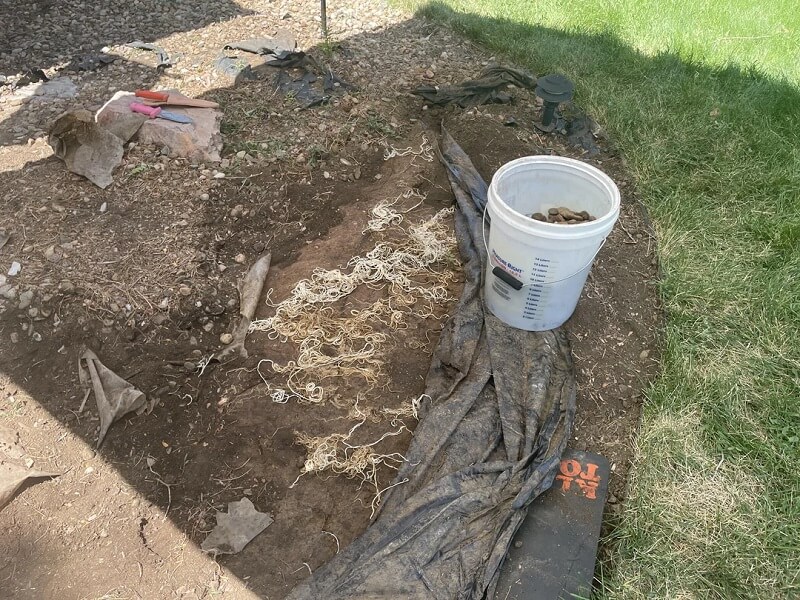A Denver homeowner took to Reddit to share the backbreaking work they started after the property's last owner had made a grave landscaping mistake.
The poster said their "long overdue project" covered a mere 200 square feet, but they encountered a problem beneath landscaping fabric: bindweed. The photo they shared showed a bucket half-filled with decorative rocks, and the fabric was peeled back, exposing what looked like hundreds of feet of tangled white string — or perhaps spaghetti.

"Pray for me," they wrote.
One user responded: "I've done a near identical project in my yard and I feel for you. That's a nice bowl of spaghetti you've got there. My bindweed looked the same after it spent a full season under cardboard. It's unstoppable!"
Bindweed is a perennial that can grow roots up to 20 feet, according to PlantTalk Colorado. On the surface of the earth, it sprouts arrowhead-shaped leaves and white or pink flowers. If a plant, fence, house, or other vertical structure is present, it will climb it.
Hand-pulling doesn't help eradicate it because of the root system. Its seeds can remain viable for 20 years, too, so it must be stopped from producing. As the poster mentioned, other plants can help crowd it out.
Save $10,000 on solar panels without even sharing your phone number Want to go solar but not sure who to trust? EnergySage has your back with free and transparent quotes from fully vetted providers that can help you save as much as $10k on installation. To get started, just answer a few questions about your home — no phone number required. Within a day or two, EnergySage will email you the best local options for your needs, and their expert advisers can help you compare quotes and pick a winner. |
This story highlighted the need to avoid the marketing scheme that is landscaping fabric. It may be labeled as a weed barrier, but it does not hold off such unwanted vegetation or kill it.
If weeds root into the plastic-based material, it can create a huge entanglement problem. The expensive textile also sheds microplastics and other harmful chemicals and prevents the exchange of water, gases, and nutrients between the soil underneath and air above.
Natural mulch is a great alternative, and cardboard and newspaper work similarly well.
If you're looking to upgrade your yard, try rewilding or going with a clover lawn instead of traditional turf grass. The more native plants you incorporate the better, as they provide benefits to you and wildlife, aiding in flood and erosion control and enticing pollinators and other small creatures that are repelled by monocultures.
TCD Picks » Upway Spotlight
💡Upway makes it easy to find discounts of up to 60% on premium e-bike brands
Even with an initial investment, you can save money by reducing your water usage and the need for maintenance, in addition to cutting out fertilizers and pesticides.
Better for you, better for the planet.
"This was me last summer — bindweed spaghetti under 2 layers of landscape fabric and several inches of gravel," one Reddit user commiserated. "I removed everything last fall, pulled up every bit of bindweed root I could possibly find. I didn't replace the fabric, and (knocks on every piece of wood handy) I've only had a couple bindweed starts so far this season."
Another said simply: "I repeat: landscaping fabric does not work."
Join our free newsletter for easy tips to save more and waste less, and don't miss this cool list of easy ways to help yourself while helping the planet.















